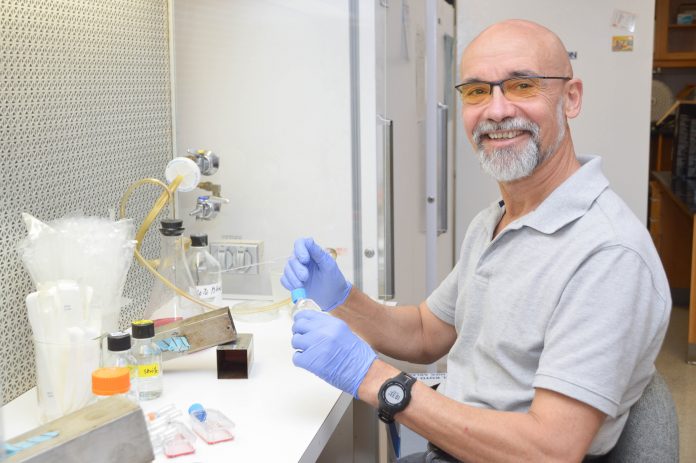An Oklahoma Medical Research Foundation scientist has made a new discovery about the process that drives cell division.
The average human body is made up of around 47 trillion cells. Each day millions of cells die naturally. So millions of them must divide into two new cells to replace them for life to continue.
While it may sound simple, cell division requires precise timing to avoid catastrophic results, like cancer, where cells divide unchecked, or birth defects caused by an incorrect number of chromosomes.
OMRF researcher Gary Gorbsky, Ph.D., has discovered an enzyme called PP1 that tells the cells it’s the right time to divide.
“Before cells divide, the chromosomes make copies of themselves. When it comes time to divide, they line up like two rows of runners facing in opposite directions,” said Gorbsky, who holds the W.H. and Betty Phelps Chair in Developmental Biology at OMRF. “When enough PP1 is concentrated on the chromosomes, it gives the start signal for the chromosomes to separate and race toward opposite ends of the cell.”
In previous work, Gorbsky studied a group of proteins called the Ska complex that he knew played a key role in cell division. Gorbsky has now found that the Ska complex recruits PP1 to act as a sort of “starting gun” that tells cells when to separate.
“One of Ska’s major jobs is to bring this enzyme to the right location on the chromosomes so it can give this ‘go’ signal inside the cell,” said Gorbsky, who also serves as head of OMRF’s Cell Cycle and Cancer Biology Research Program. “We know the Ska complex drives the process, and now that we’ve identified PP1, we can learn a lot more about how it is regulated and the factors that coordinate it.”
There are still huge gaps in our understanding of cell division, said Gorbsky, but discoveries like this new one help researchers piece together the complex puzzle. Ultimately, scientists hope to learn how and why cell division goes wrong and devise ways to correct it, which could lead to new ways to treat or prevent conditions like birth defects and cancer.
“You have to know how something works before you can fix it,” said Gorbsky. “The more we understand the cell division process, the better chance we have to improve treatments for diseases.”
The research was published in the scientific journal eLife.
Former OMRF researcher Sushama Sivakumar, Ph.D., also contributed to this project. Funding for the research was provided by grant R01 GM111731 from the National Institute of General Medical Sciences, part of the National Institutes of Health.













